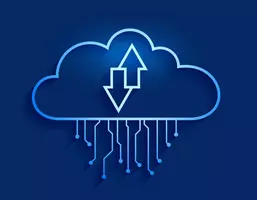Project Description/project implementation overview:
The IoT Smart Public Transportation System is a project that aims to use IoT technology to improve the efficiency and convenience of public transportation. The system would use a combination of IoT sensors, such as GPS, cameras, and RFID, to gather data on the location, occupancy, and usage of public transportation vehicles. This data would then be analyzed to identify patterns and opportunities for optimization, such as reducing wait times, improving routes, and increasing the frequency of service.
The system would consist of a set of hardware and software components. On the hardware side, the system would include GPS, cameras, RFID readers, and other sensors installed on the public transportation vehicles and at various stops along the route. On the software side, the system would include a cloud-based platform for receiving, analyzing, and displaying the data, as well as an application for transportation operators and riders to access the data and plan their trips.
The system would provide a range of benefits for transportation operators, riders, and the general public. For example, the system would enable operators to detect and diagnose problems with the vehicles more quickly, reducing downtime and maintenance costs. It would also provide valuable insights into the usage of the transportation system, helping operators to make more informed decisions about service levels. Meanwhile, riders would have access to real-time information about the location and occupancy of public transportation vehicles and can plan their trips more efficiently.
Overall, the IoT Smart Public Transportation System would be a powerful tool for improving the efficiency, convenience, and sustainability of public transportation, while reducing costs and improving overall operations.
Hardware and software requirements for project implementation:
- GPS module: To track the location of the vehicles in real-time.
- Cameras: To capture images of vehicles and riders for identification and security purposes.
- RFID readers: To detect and identify riders as they board or exit the vehicles.
- Communication module: To transmit the data from the vehicles to the central server. This could include a cellular module (GSM/GPRS/4G) or a satellite communication module.
- Microcontroller: To process the data from the sensors and control the communication module.
- Power supply: To provide power to the system, such as a battery or solar panel.
- Enclosure: To protect the system from environmental conditions.
- Operating system: To run on the microcontroller and manage the system's resources.
- Sensor drivers: To communicate with the GPS, cameras, and RFID readers.
- Communication stack: To manage the system's communication with the central server.
- Algorithm: To process the data from the sensors and optimize routes, wait times, and service levels.
- Cloud Platform: To receive, store, analyze and display the data, and enable the transportation operators to access the data remotely.
- Public transportation management Application: To enable transportation operators and riders to access real-time information about the location and occupancy of vehicles and plan their trips.
- Payment gateway integration: To enable the riders to pay for the fare automatically
What You Will Learn? By working on the project
- IoT technologies: Students will learn about the various components of IoT systems, such as sensors, actuators, and communication modules, and how to use them to collect, transmit, and analyze data.
- Embedded systems: Students will learn about the principles of embedded systems, such as microcontroller programming, sensor interfacing, and communication protocols.
- Cloud computing: Students will learn how to use cloud-based platforms to receive, store, and analyze data, as well as how to create web and mobile applications to access and control the system remotely.
- Algorithm development: Students will learn how to develop algorithms to process the data from the sensors, optimize routes, and improve the overall efficiency of the fleet.
- Project management: Students will learn how to plan, design, and implement a complex IoT-based system, taking into account factors such as project scope, budget, and timelines.
- Teamwork: Students will learn how to work effectively in a team, and how to collaborate with other students and mentors to complete the project.
- Problem-solving: Students will learn how to identify and solve problems that arise during the project, and how to think critically to find innovative solutions.
- Understand the strengths and limitations of different machine learning and deep learning algorithms, and be able to choose appropriate algorithms for a given task.
- Understand how to use various tools and libraries (such as Tensor Flow) to build and train machine learning and deep learning models.
- Understand the importance of pre-processing and cleaning data before training a model. This could include techniques such as scaling, normalization, and handling missing or incorrect values.
- Develop an understanding of how to optimize model hyper parameters in order to improve performance. This could include techniques such as grid search, random search, or Bayesian optimization.
- Understand the concept of overfitting and be able to use techniques such as regularization and early stopping to prevent overfitting in their models.




